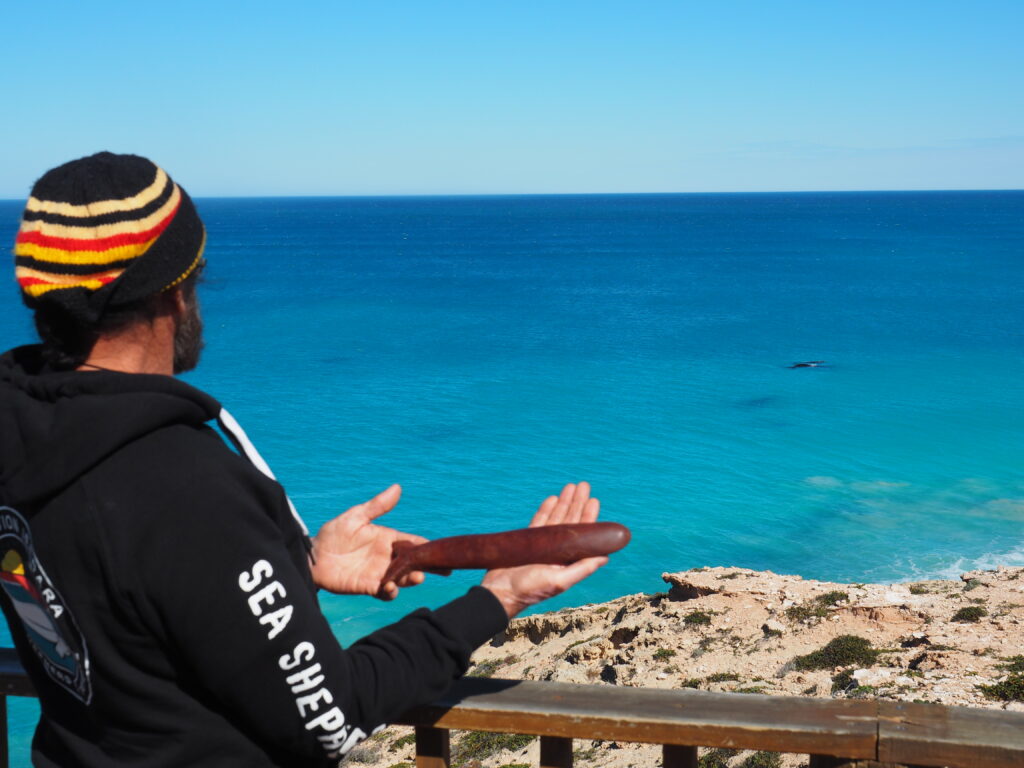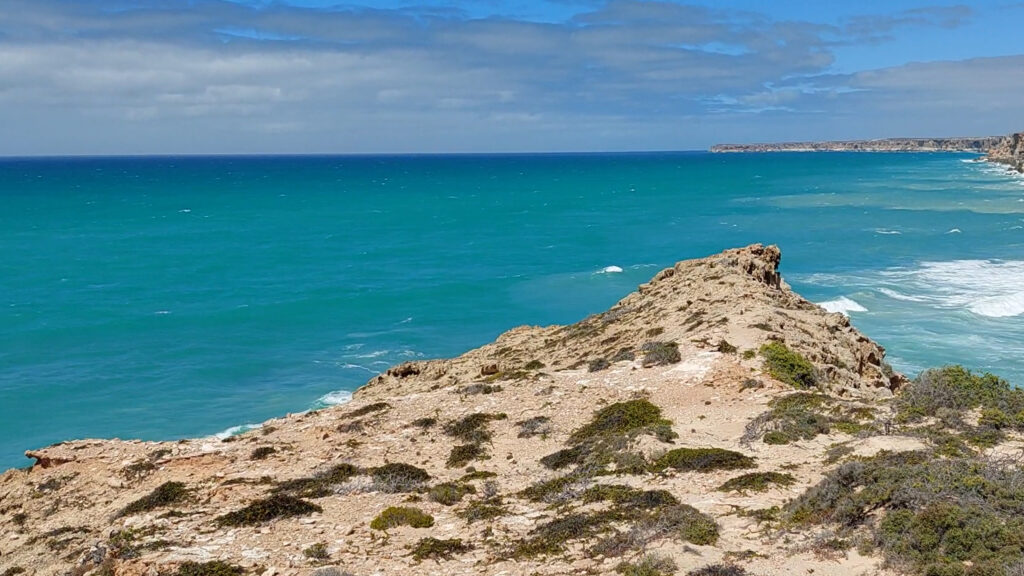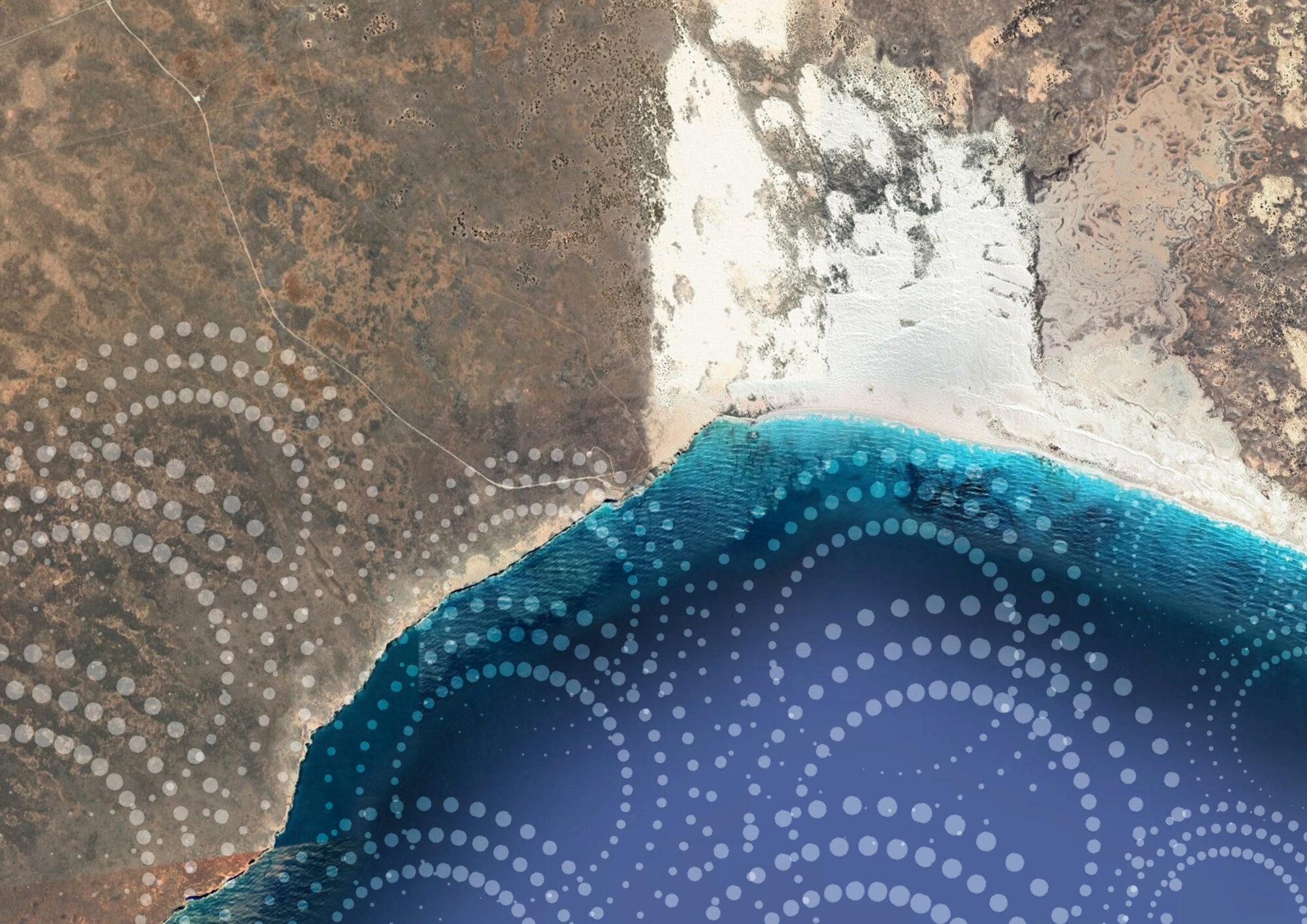Miranangu, Head of the Bight, is a sacred whale calling place and a ceremony ground for whale ritual dance and song. This is where we honour, celebrate and welcome back home the whales. Together us Yerkala Mirning and whales are connected and reunited again in our womwoum; together in our belonging.
Here are significant whale stone arrangements; carved by our ancestors and placed in connecting the songlines and journey of Jeedara. Here our great white Dreamtime Creator traveller left his imprint, mark and echoes for our great seacoast womwoum, home and belonging.
This is our sacred place for calling the whales.

Whale Nursery of Global Significance
“The Great Australian Bight is a pristine ocean environment, flanked by the Nullarbor and the longest sea cliffs in the world. It is a haven for whales, fish, plants, birds, marine mammals and an array of invertebrate ecosystems. The area has unique nutrient upwellings and scientists estimate that around 85% of all species found in the Bight are found nowhere else in the world — a figure that trumps the endemic diversity of the Great Barrier Reef. What happens in the Bight impacts species’ survival at the global level.
The Bight is a critical sanctuary for many protected marine species — including blue, pygmy blue, sperm,
killer and humpback whales; Australian sea lions; great white sharks and albatross. The Head of the Bight and Twilight Reserve are internationally important southern right whale calving and nursery areas.
The Head of the Bight alone is a critical gathering area for this endangered species with up to half of the Australian population (around 10% of the global population) using the region. Each year, between 25 and 55 calves are born here.” The Great Australian Bight Alliance Book 2017, p3.
Gaduma, the southern right whale is one of the biggest creatures ever seen on Earth. The Bight is a globally significant southern right whale nursery and sanctuary.
The Blue Whale, Southern Right Whale and Humpback are all listed on the international Red List of Threatened Species. (International Union for Conservation of Nature 2021 Red List.)
The Head of the Bight has at least one third of all observed baby whales born in Australia. (DNP 2005 GAB Marine Park (Commonwealth & State Waters) A Description of Values and Uses.)
The population has returned from near extinction after historic whaling during the 1800s. (DEH 2006 Southern Right Whale, Great Australian Bight Marine Park.)
Healthy oceans contribute to a healthy planet and this includes the climate change moderation that whales bring with the cycle of phytoplankton, which has been highlighted in global studies. (Chami, R. et. al. 2019 Nature’s Solution to Climate Change, A strategy to protect whales can limit greenhouse gasses and global warming, I.M.F.) Microscopic marine plants known as phytoplankton also remove carbon dioxide from the surface layer of the ocean when they photosynthesise. (Torak, S. 2015 CSIRO ECOS Issue 208.)

